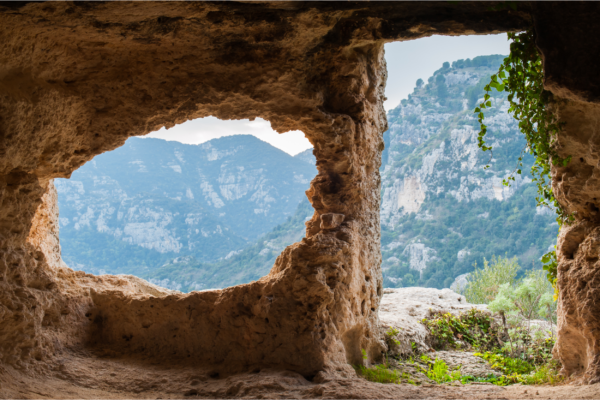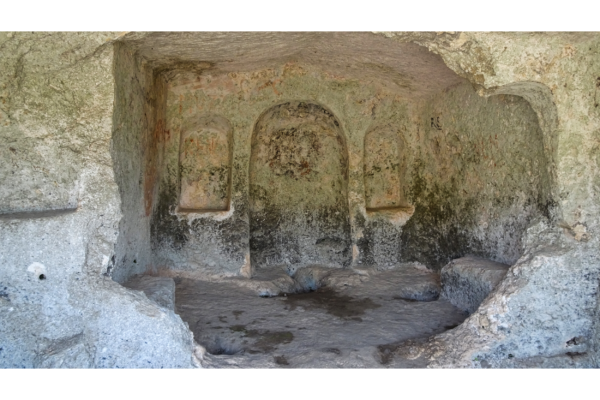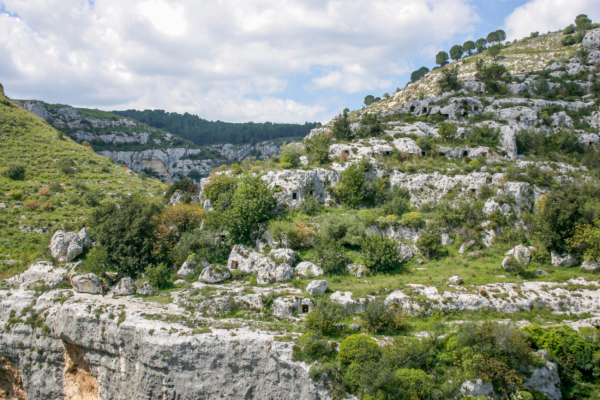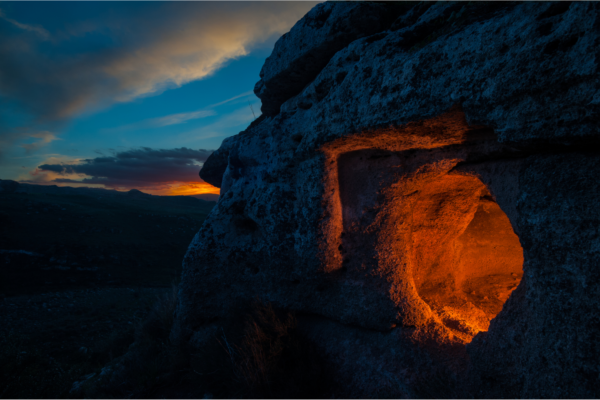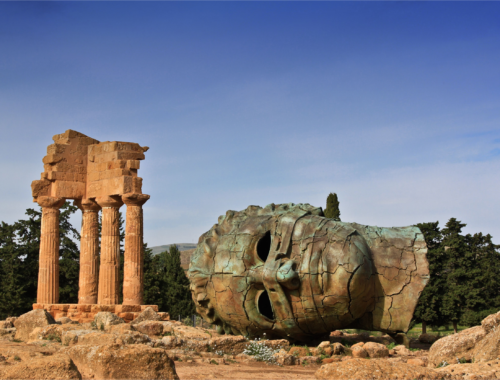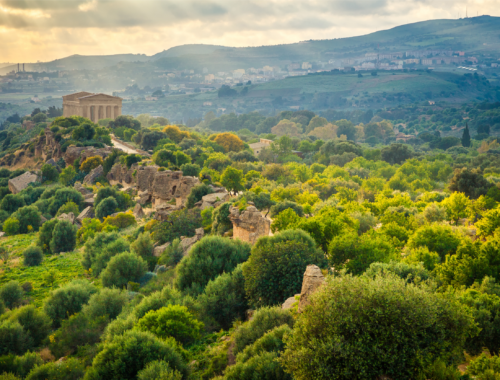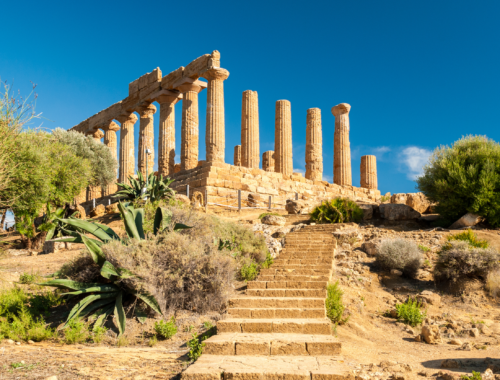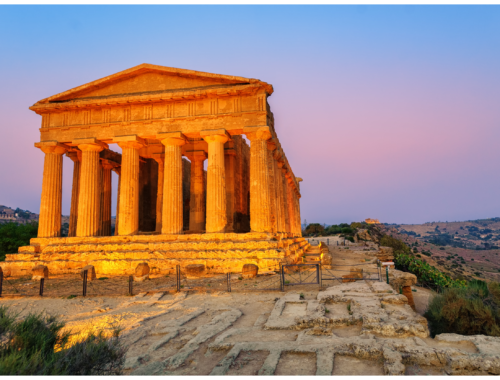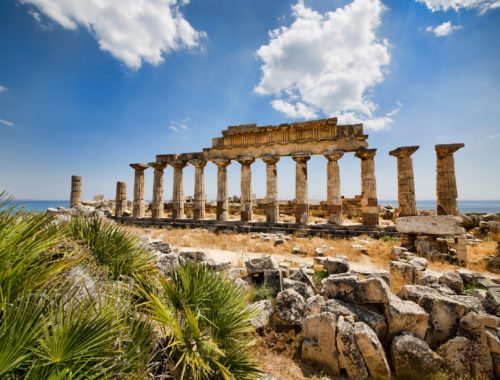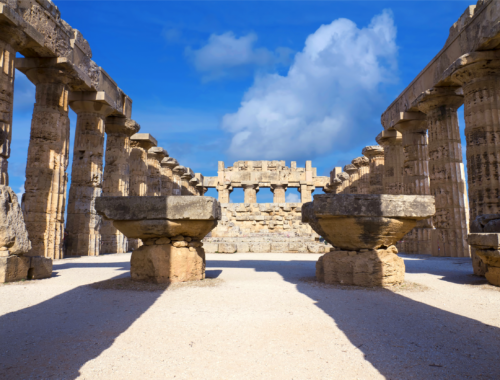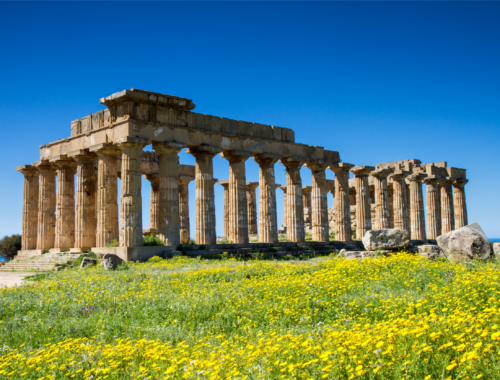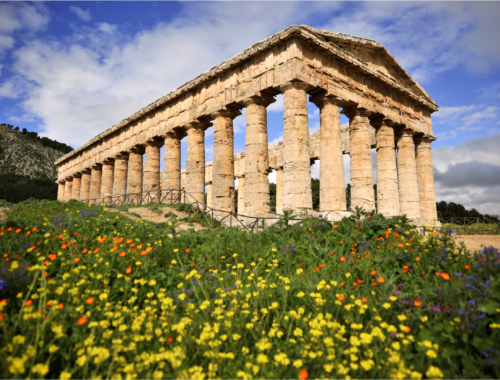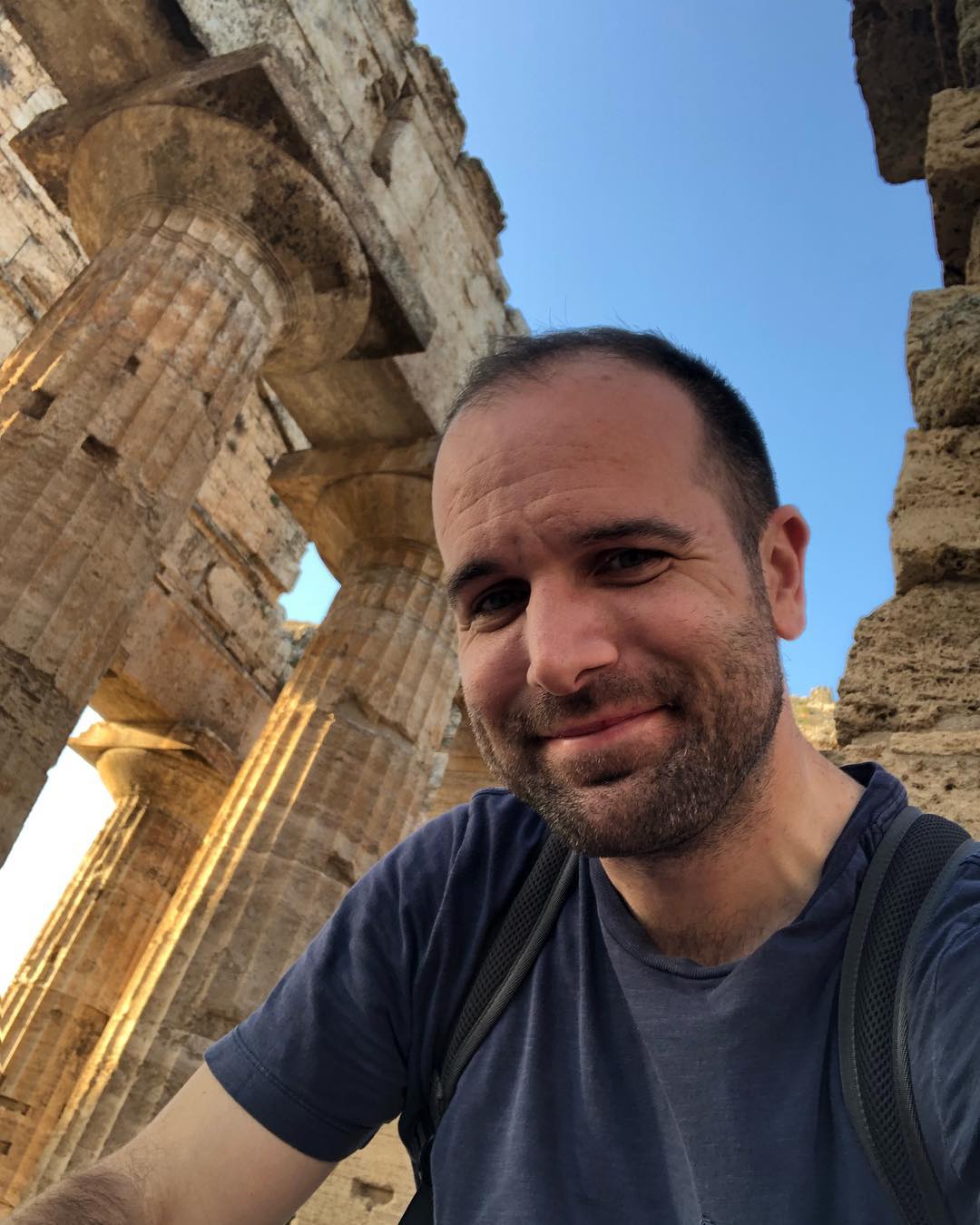Italy Sicily

“The First Province”
Sicily’s strategic location at the heart of the Mediterranean has long made the island an attractive conquest. It has probably been ruled by more individual political powers than almost anywhere else in the Western Mediterranean.
The original people of Sicily were settlers from Italia: the Elymians in the West, the Sicani in the center and the Sicels in the East. The Greeks first began settling the island with colonies in the 8th century BCE, including Syracuse and Agrigento. Many of the island’s native tribes imitated Greek architecture, with native cities such as Segesta and Selinunte built in the Greek style.
Eventually, the people of Carthage, the pre-eminent city state of the Western Mediterranean, took an interest in the island and began settling on the west coast. Some of the Elmyians welcomed this as they had been wary of Greek encroachment, but they eventually turned on Carthage during the First Punic War and allied with Rome.
The First Punic War (264-241 BCE) was Rome’s first real foray into wider Mediterranean politics, following their occupation of Southern Italia after the Pyrrhic Wars. The Italian settlement of Messana requested Carthage’s assistance against Syracuse, then turned on Carthage after they saw that Carthage meant to dominate the whole island, and requested Rome’s help to intercede. Rome, seeing the strategic advantage, waded in. The war lasted 23 years and the last decade or so was a deadlocked guerilla war.
In the end, Carthage was defeated and Rome incorporated Sicily as their first “pro vincia”. They allied with Syracuse and even modeled their government in Sicily after Syracuse’s own policies. (Eventually Syracuse would be brought under Roman rule during the devastating Second Punic War, which featured the inventions of its most famous son, Archimedes.) Instead of levying troops, the Romans taxed the local population. They also eschewed direct rule by the Roman Senate and consuls for a proconsul or propraetor who would rule the island in their stead. This became the basis for Roman rule throughout the Mediterranean.
Sicily was mostly known for its slave estates during Roman rule which led to multiple slave uprisings. The grain that Sicily provided Rome was invaluable and its strategic location meant that the Romans guarded the island heavily. It would remain a part of the Roman Republic and later Empire until the collapse of the Western Roman state and its eventual absorption by the Arabs for centuries.
The island’s sites are nothing short of stunning. Agrigento alone is considered the greatest collection of Greek ruins ANYWHERE, including Greece. Sicily has in recent years seen a resurgence in tourism thanks to the waning influence of the local mafia. If you intend to visit, I highly recommend looking up the local Addiopizzo group, which advises tourists on how to patronize establishments that do not pay the mafia protection money. All in all, I’d forego a trip to Florence to visit Sicily any day.
Eastern Sicily
Catania
One of Sicily’s major cities, it lies between Syracuse and Messina.
Founded in 729 BCE by Chalcidian Greek settlers, it eventually fell to the Romans in the First Punic War. A detailed summation of the city’s history can be found on Wikipedia.
Catania has several major structures left behind. It is easily the biggest surprise I’ve found in doing my research on Sicilian ruins. The structures include:
- The Roman amphitheater in the city centre
- Just down the road is the Roman theater
- The many Roman baths that remained, including Terme Achilliane, Terme dell’Indirizzo, Terme della Rotonda, and Terme Romane. I’m sure there are more I haven’t found.
- A Roman aqueduct in nearby Valcorrente, part of the largest aqueduct system in Sicily. I’ve seen pictures, but I can’t find the exact location! Probably best to ask the tourism board on that one.
Aside from the aqueduct, most of the structures can be found in the city centre of Catania. La Sicilia in Rete has an incredible listing of all of the ancient sites and museums in the area. Use this as your guide! Italy This Way’s site gives information on the theater, specifically.
Morgantina
Near the middle of the island, about an hour west of Catania.
We don’t really know when it was founded, but the first account of it comes from 459 BCE. It later favored the Carthaginians in the First Punic War. After taken by Rome, it was the center of the Servile Wars of the first century BCE. Strabo notes that, by the first century CE, the city had been destroyed.
The archaeological museum of Aidone exhibits the site’s history and finds. The main structures of the city itself are fairly well laid out, with the agora (including the Greek theater) mostly excavated. The sanctuary of Demeter and Kore can be found here as well.
The American Excavations at Morgantina, funded by Princeton University, includes researchers from across the US. If you want an in-depth dissection of the site, including geospatial digital construction of the site, then you’ll love this page!
Visit Sicily is a great walkthrough of the site, whiel Italy This Way provides a walkthrough as well.
See the Italy This Way page for more details. Siti Archeolgoici d’Italia gives cost breakdowns and address.
Pantalica (Dionysus' Ear)
In the hills about 45 minutes west of Syracuse.
The necropolis dates from about the 13th century BCE to the 7th century BCE, co-terminous with the arrival of the Sicels to the island They flourished for centuries until the arrival of the Greeks. It was still used during antiquity, but was largely abandoned by the Middle Ages.
An estimated 5,000 tombs were here in prehistory. The majority of the remains are burial chambers cut into the limestone. There are also some larger rock cut houses. Today, it is part of Syracuse’s World Heritage Site. There are five main cemeteries with access instructions:
- The necropolis of Filiporto consists of almost 1000 tombs, located on the southwestern side of the promontory (accessed by road from Ferla). In the same area are the remains of a defensive rock-cut ditch of later date (probably 4th century BC) traversing the promontory at its narrowest point.
- The North West necropolis is one of the earliest (12th and 11th century BC), and is traversed by the tarmac road from Ferla.
- The Cavetta necropolis has tombs and rock-cut houses of the prehistoric and later periods, and can be seen from the road and designated viewing platforms.
- The North necropolis is a spectacular cemetery of about 1000 tombs covering very steep slopes overlooking the Calcinara river, best seen from the track coming from Sortino and from viewing platforms near the path. Remains of large rock-cut dwellings are on the gentler slopes to the east.
- The South necropolis extends along the Anapo river for over 1 kilometre and is easily seen from the trackway at the bottom of the valley (a path leads down to it from the anaktoron). The old railway station, restored, has information about local fauna and flora
SicilianBlog.Net has a terrific write up on the site, as well as how to access it. Amazing find.
Syracuse
The city sits on the southeastern end of Sicily.
A living city with over 2,700 years of active history. The Greco-Roman remains are scattered throughout and in the hinterland. The Ortigia or Old Town, is the island that forms the heart of the ancient city.
Syracuse was founded in the 730’s BCE by Greek settlers from Corinth and Tenea. It was the dominant political force on the island up to and including the Roman occupation, which began in the mid-2nd century BCE after the Second Punic War. After the war, Syracuse became the capital of the Roman province of Sicilia for hundreds of years. The famous Greek scientist Archimedes was from Syracuse, and used his famous “Claw” to defend the city from the Romans.
Today, the city is home to some truly stunning architecture known as “Sicilian Baroque”, which, in a few cases, is built around the ancient remains.
The major sites in the city:
The Neapolis Archeological Park which contains the Greek theater and the Roman ampitheater. The theater is from the 5th century BCE and the ampitheater dates from the third century CE. World Heritage Site. Found NW of the main city.
Duomo di Siracusa, built off the bones of the original Temple of Athena which occupied this area. The Doric columns are still intact inside the cathedral. Found in the Ortigia.
Temple of Apollo, a wall and some lower bits of the columns. Not as much to look at, but great for completists. Found in the Ortigia.
Fountain of Arethusa, found on Ortigia. Great place to have dinner with a glorious sunset right on the ocean.
Syracuse is serviced by the main train and bus lines of the island. The train station is Siracusa. Most of the attractions listed above are walkable on the Ortigia. While the walk to Ortigia is only 20 minutes from the train station, you can take a shuttle service described here.
To get to the Neapolis Archeological Park, you could walk 20 minutes up Corso Gelone,take a taxi, or a bus #s 6, 8, 11, 12 or 13. If coming from Ortigia, take Sd’A Trasporti minibus 2.
Costs and Hours
Neapolis Archeological Park: Adult/Reduced: €10/5. w/ Museo: €13.50/7; Open: 9am to 6pm. Visit time: 1.5 hours
Duomo di Siracusa: Adult/Reduced: €2/1; Open: 9am to 5pm
Temple of Apollo and Fountain of Arethusa: Free, open 24 hours
Link
Taormina
Along the east coast of Sicily, in between Messana and Catania.
Ancient Tauromenium is believed to have been founded by settlers from Naxos, sometime around 734 BCE. It eventually fell under the power of Syracuse, but passed to the Romans in the Second Punic War, where it was granted the status of civitas foederata, one of the few cities in Sicily to enjoy that privilege.
The showstopper is the Greek theater, later embellished by the Romans, which has to have the single best view of any ancient theater that I can think of. The view over to Mount Etna and the Mediterranean looks astounding. There is a smaller theater, the Odeon, which was built by the Romans further down the hill.
The theater is located at Via Teatro Greco, 40, Taormina, Sicily. If you are staying in Catania or Messina, it is an easy drive of just over an hour. If arriving by train, get off at the stop “Taormina-Gardini”. From there take the bus. There is a good thread in TripAdvisor on this here.
How much is it?
- Full ticket: 10 Euro
- EU members, 18-25: 5 Euro
- Free: First Sunday of every month, EU members under the age of 18, Italian teachers, your birthday, member of the press)
- Audioguide: 5 Euro
Timetable and location can be found on Travel Taormina
Tindari
On the northern coast of Sicily, near Milazzo
Founded relatively late in the Greek history of Sicily, around 396 BCE, ancient Tyndaris became an important strategic point during the First Punic War, where the Battle of Tyndaris was fought off it’s shores. It eventually made an alliance with Rome which would last through the end of the Western Roman Empire.
The main site includes the Greek theater (with its stupendous view of the sea), a propylaeum, some other monumental architecture, mosaics, and tombs.
Villa Romana di Patti, a Roman villa constructed around the 2nd or 3rd centuries CE, is about 20-minute drive to the west.
Hit Sicily has directions to Tindari.
Villa Romana del Casale
About 3km from the town of Piazza Armerina.
Built in the early 4th century CE, the owner of the villa is unknown, though it is theorized that it was a senatorial aristocrat. A town grew up around it, but both the villa and town were eventually abandoned after the Vandal invasion of the 5th century CE.
The villa contains some of largest and varied collections of Roman mosaics in the world and is a World Heritage Site. The athletic competition scene is particularly well known as it shows women competing in sports. The main parts of the villa include:
- Monumental Entrance
- Peristyle garden and southern rooms
- Basilica
- Triclinium and elliptical peristyle
More information can be found at Visit Sicily. https://www.visitsicily.info/en/villa-romana-del-casale/
Sicily Holiday has a write up on how to visit the Villa.
Western Sicily
Agrigento (The Valley of the Temples)
Southern Sicily, near the city of Agrigento.
Named for the Acragas river that flowed nearby, it was founded by Greek colonists from Eastern Sicily in 582-580 BCE. The city’s wealth flourished thanks to its position at the mainland route across the island. Plato famously stated, “they built like they intend to live forever, yet eat like this is their last day.”
While ancient sources list the population anywhere from 200,000 to 800,000(!) at its peak, modern scholars put the population anywhere from 16,000 to 40,000.
The Romans laid siege to the city during the First Punic War and sold the population into slavery. They later named it Agrigentum and gave the population full Roman citizenship under Julius Caesar.
For more information on the site’s history, visit the Wikipedia site.
There are remains of seven temples here, all in the Doric style, including:
- Temple of Concordia, built in the 5th century BCE, the most renowned at the site.
- Temple of Juno, also built in the 5th century BCE
- Temple of Heracles, built in the 6th century BCE; only the columns remain
- Temple of Olympian Zeus, built in 480 BCE
- Tmple of Castor and Pollux, only a corner of the temple remains
- Temple of Vulcan, from the 5th century BCE
- Temple of Asclepius
There are also other remains, including the Tomb of Theron, and the Bouleuterion, where the boule, the assembly of representative magistrates, met. Visit Sicily has a detailed breakdown of the structures left, as does Lonely Planet and UNESCO.
Along Dusty Roads explains the various ways to get to the site.
Selinunte
Near the southwestern part of Sicily, close to Castelvetrano.
Founded around 628 BCE by colonies from Megara Hyblaea, also on Sicily. They entered into conflict with the Elmyian people at nearby Segesta. Eventually, during the First Punic War, Selinunte was destroyed by the Carthaginians and its population was sent to nearby Lilybaeum.
More information on Selinunte’s history can be found here.
And here is a map of the ancient city: https://upload.wikimedia.org/wikipedia/commons/5/50/Stadtplanung_Selinunt.JPG
- The Acropolis at the centre with temples and fortifications
- Gaggera Hill in the West, with the sanctuary of Malophoros
- Mannuzza Hill in the north with ancient housing
- The East Hill, with other temples
- The necropoleis
Go to Visit Selinunte, which gives a detailed overview of what can be found at the site.
The same site gives detailed directions on how to get there.
Segesta
Northwestern Sicily, located in between Trapani and Palermo.
One of the greatest cities of the Elmyians, one of the native peoples of Sicily, its Greek-inspired architecture has led many to think it was a Greek colony. The origins of the city are lost, but its first historical reference was in 580 BCE when they show up as enemies of nearby Selinunte.
The entire city was put to the sword by Agathocles of Syracuse, after which it might have been refounded, where it went back and forth between the Romans and Carthaginians in the First Punic War. It remained a sizable town under Roman rule but was finally abandoned around 900 CE during the Middle Ages.
The major ruins left are the Doric temple and the theater, both of which enjoy extremely dramatic settings. Segesta Welcome goes into detail on the archaeological park and all the surrounding area. It has everything you need to know!
Segesta Welcome also gives detailed instructions on how to visit the site.






